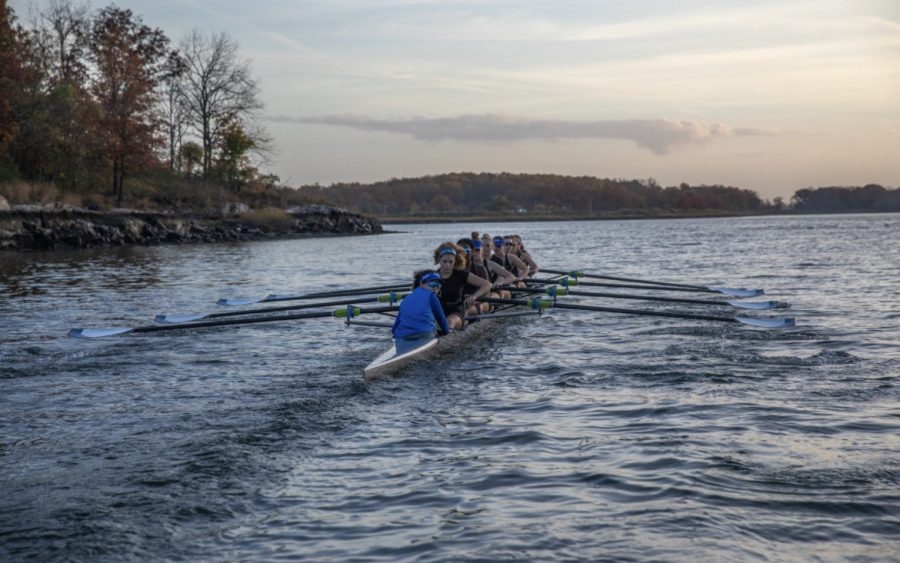Calloused Hands Hold Trophies
No high flying slam dunks, no goals from thirty feet out, no jaw-dropping catches. Your team, the boat, and water are provided – but how far one can go with crew is up to them. Crew consists of five o’clock in the morning practices and calloused hands and guarantees nothing in return. Only through hard work and trust can success be achieved.
Not offered at Hackley, crew is a sport that students pursue outside of school. Students who are interested have to join club teams to participate. Sophomore Rowan Salemi rows for Maritime Rowing Club in Norwalk, Connecticut. Rowan found out about crew in eighth grade when he tore a muscle in his arm playing baseball. His physical therapist gave him rowing as a good rehab exercise and he fell in love with the sport immediately. Freshman Sarah Rotenberg started rowing after hearing that ski racers made good rowers from an article her mom sent her, and she has been rowing for PCRA (Pelham Community Rowing Association) for two years.
Schoolwork and athletics are often difficult to manage, and adding in factors such as longer practices and farther travel distances makes it even more challenging. Sarah attends practice for three hours a day six times a week in the fall, spring, and summer. The best athletes practice even when their teams don’t and this takes up even more time.
“Aside from practices, extra work is expected so I’ll usually do a short lift before practice. I usually am able to start my homework by 9:00 p.m. and finish by 11:00 p.m. latest,” Sarah said.
Similarly, Rowan has to leave Hackley and drive thirty miles to Norwalk, CT and then go through a grueling three-hour practice,
“I get home around 7:30 p.m. every day, so it’s important to stay super efficient when doing homework and other stuff. It’s all worth it because of the experience the sport can bring. I find myself traveling to so many places I never would have visited for regattas, and the people you meet along the way adds to the fun,” Rowan said
Each person in the boat is essential with different jobs to ensure everything goes smoothly for the team. At the front of the boat facing back towards the other eight rowers, the coxswain organizes the team so that every member rows with the same power and rhythm. The coxswain is preferably light so that they don’t add any extra weight to the boat. The other rowers are responsible for listening to the directions and putting in the work in rhythm. Rowan and Sarah said that their favorite part of rowing was their teammates and teamwork.
Not only does crew involve lots of teamwork it is also great exercise as it works your abdominal muscles, quads, biceps, and lats. Sarah said that since there is no contact in crew, injuries aren’t as common and tend to be either joint-related or from bad form. However, pain and perseverance are part of the game.
“I think rowing is different from a lot of other sports because it forces athletes to be incredibly disciplined and get comfortable with pain,” she said, “We erg [rowing machine] for 80 minutes straight some days, and this can be super hard to get through. It’s also super unique in the nature of the sport. Athletes are rarely exclusively responsible for their own results but are pushed to encourage others. The better your teammates do, the better you do,” Sarah said.
Sarah explained that rowing is more difficult than any other sport she’s done in the past because of the need to perform the same energy-consuming motion over and over again without failure under intense pressure.
As rowing continues to grow at younger ages, collegiate rowing has elevated to new heights and both Rowan and Sarah wish to continue rowing through college. According to the New York Times, the popularity of rowing has increased by 20 percent since 2014. As the popularity of crew continues to skyrocket, the Athletic Department will have to watch the interest at Hackley with a close eye. If the number of students involved keeps growing, a new sports option may be coming to the Hilltop.







